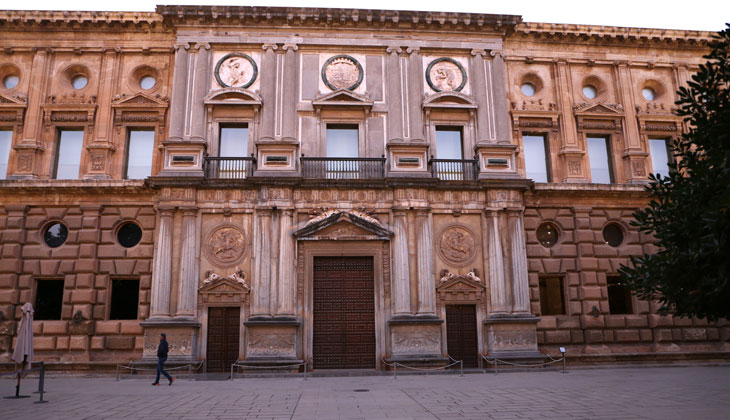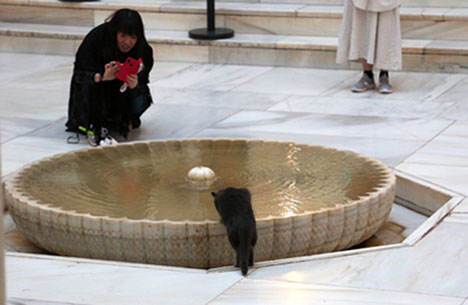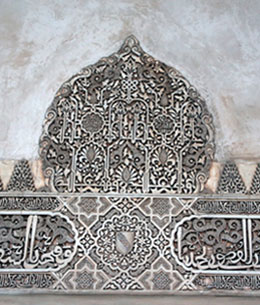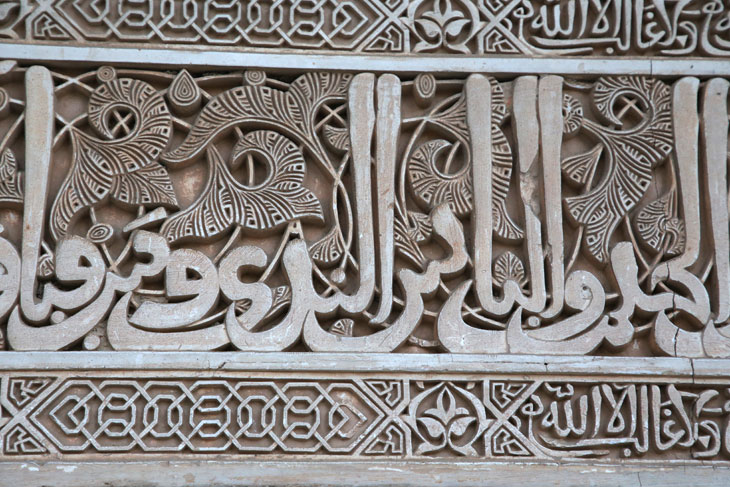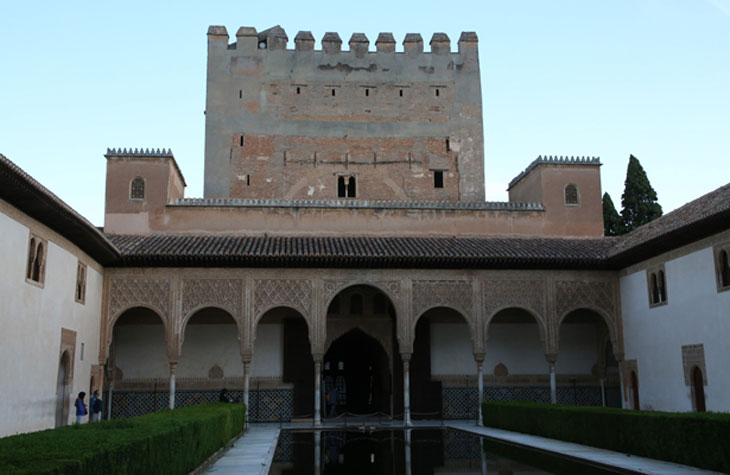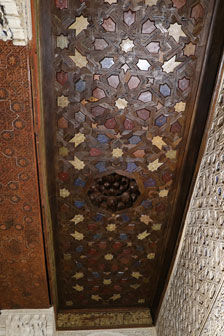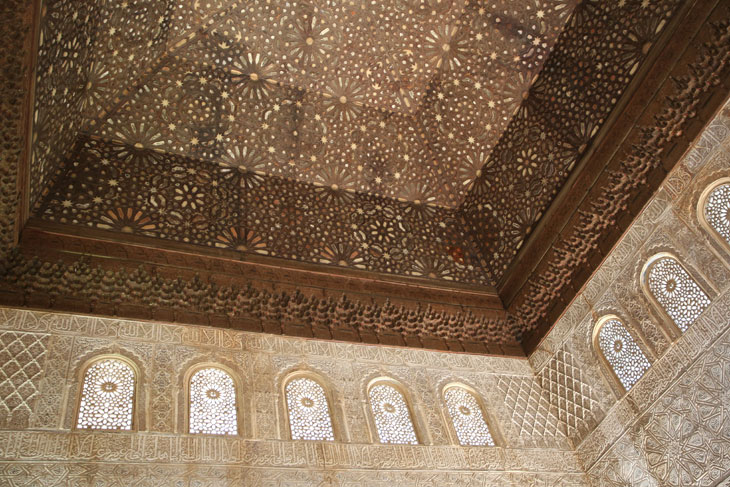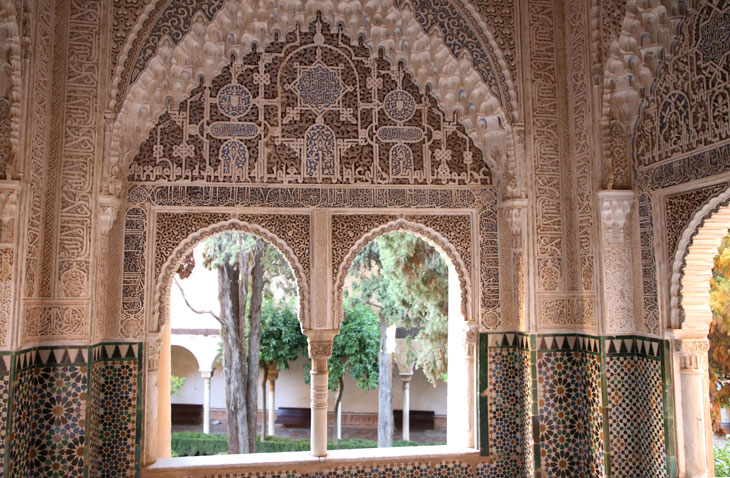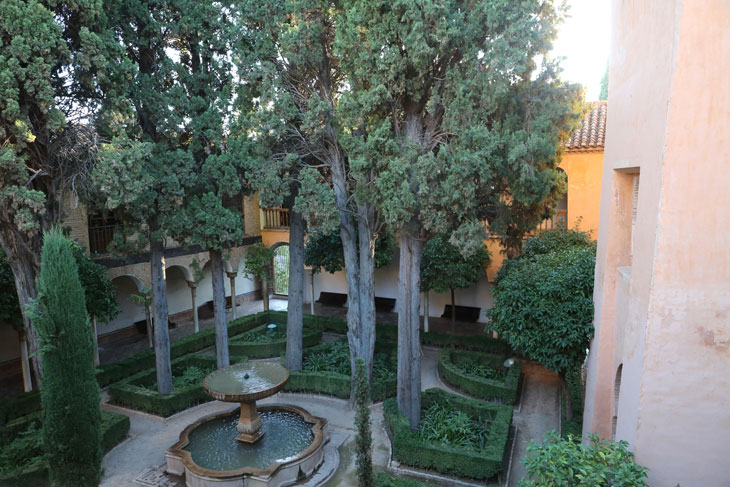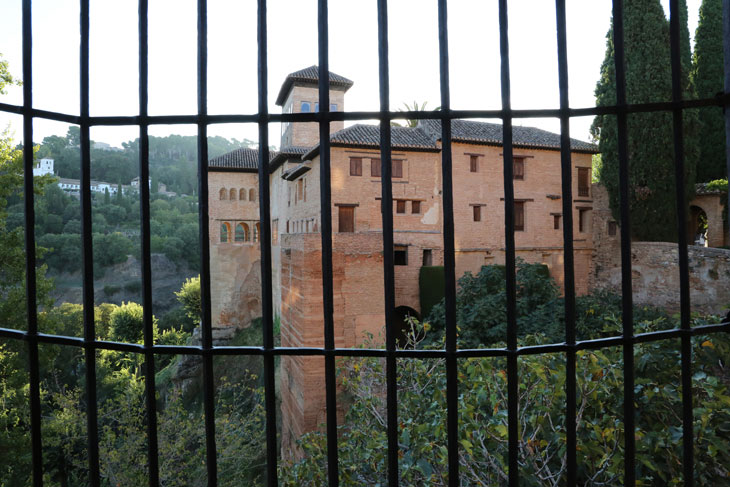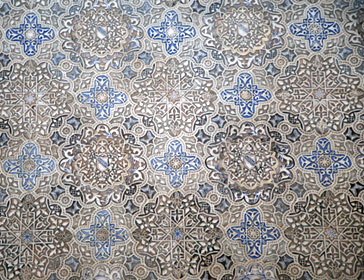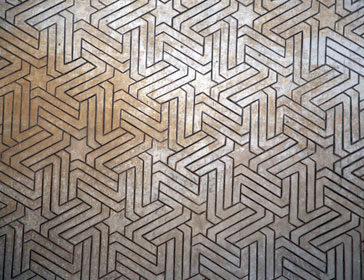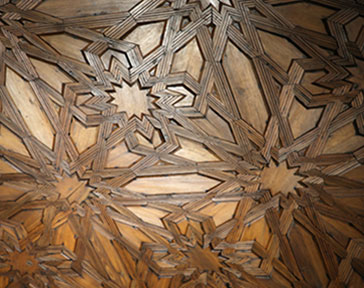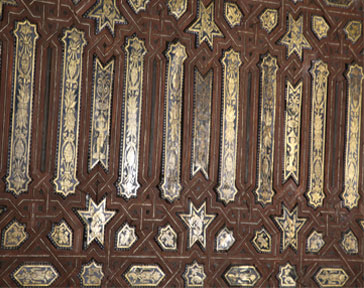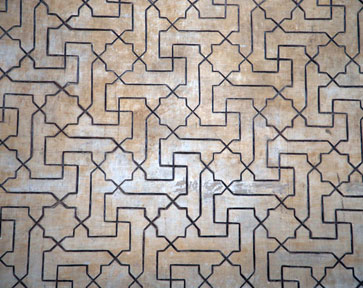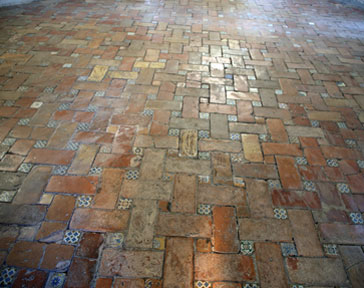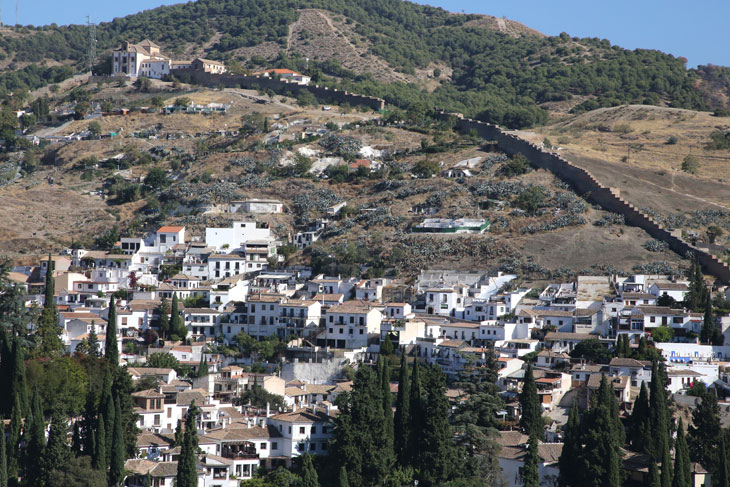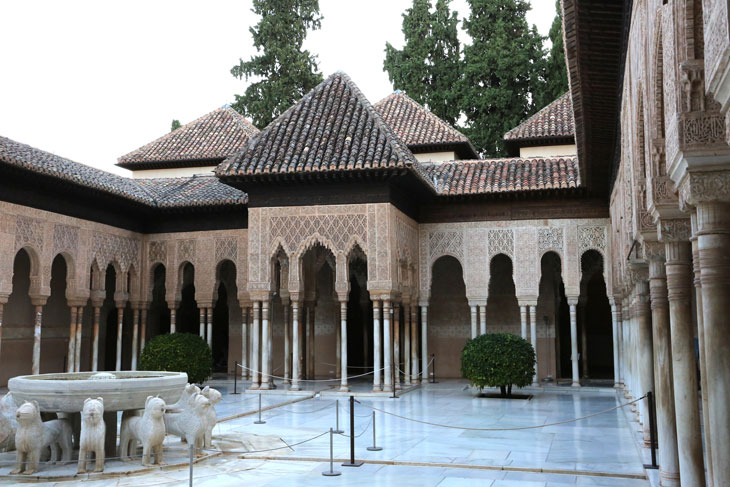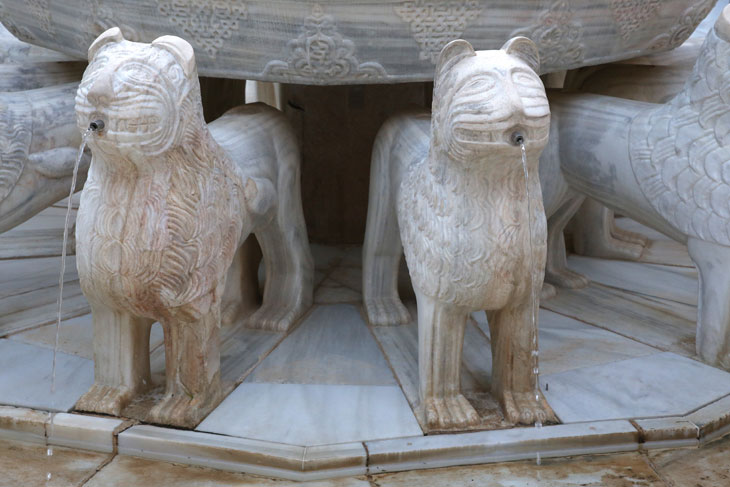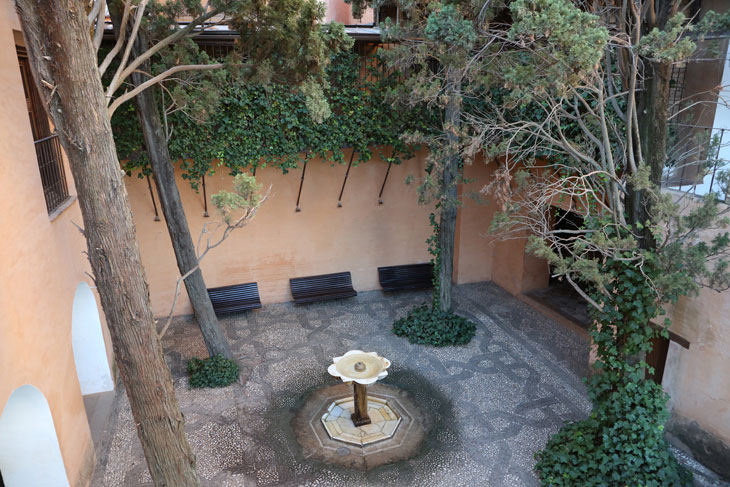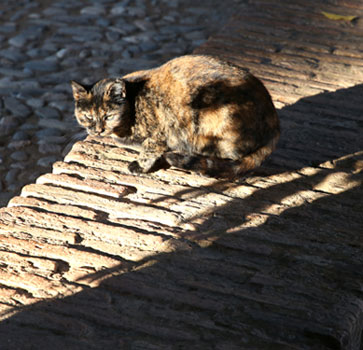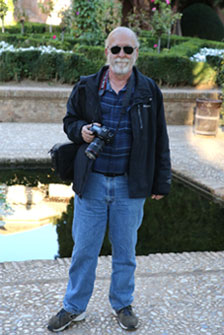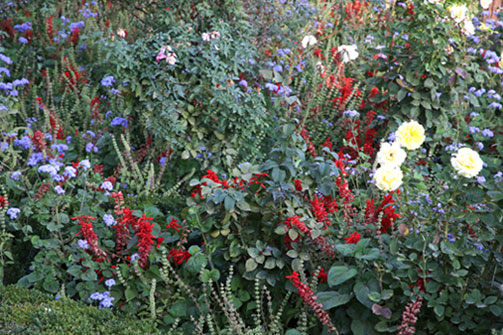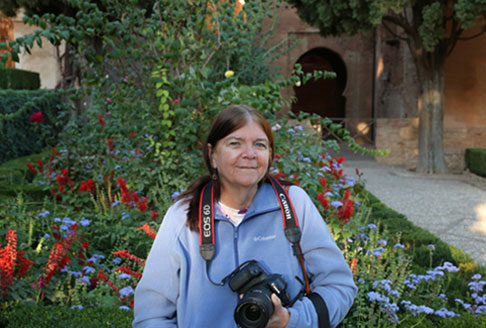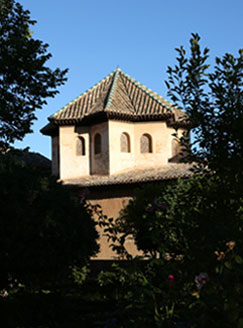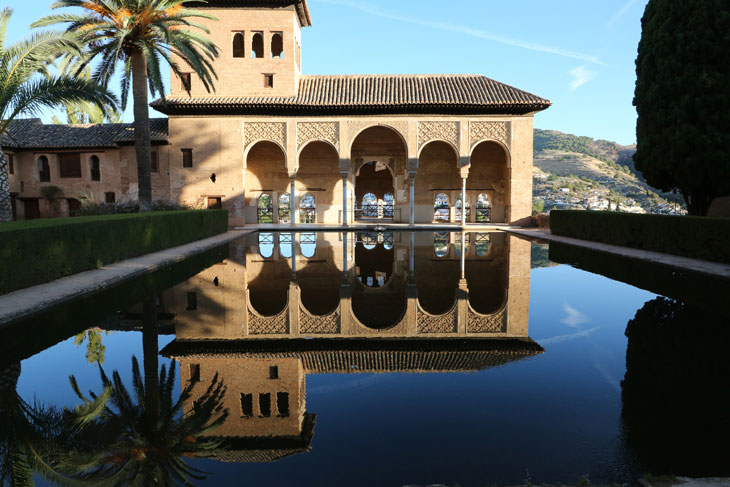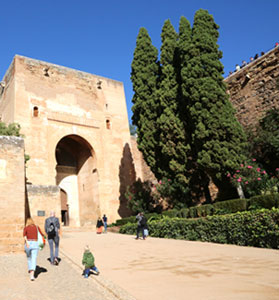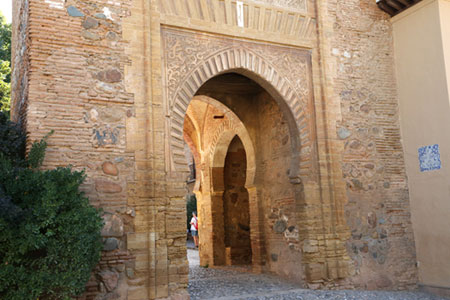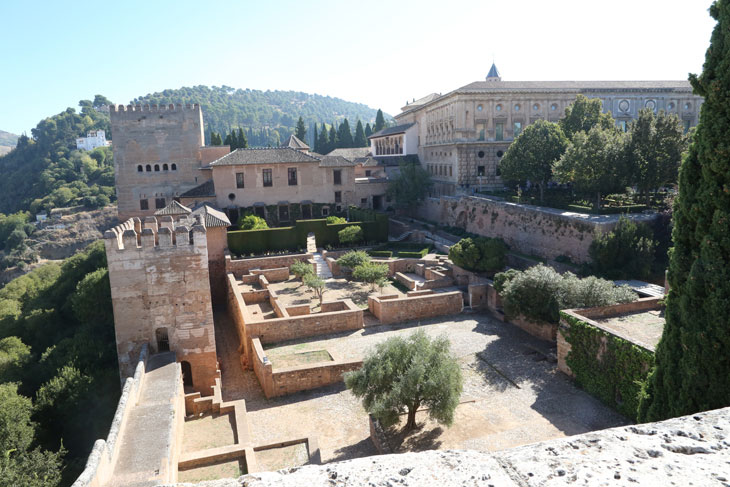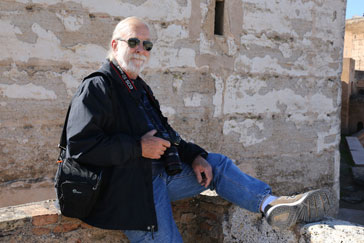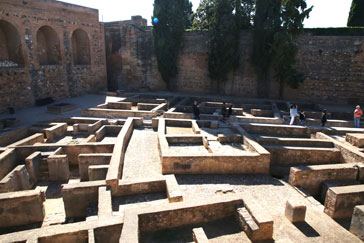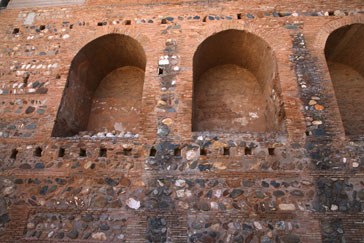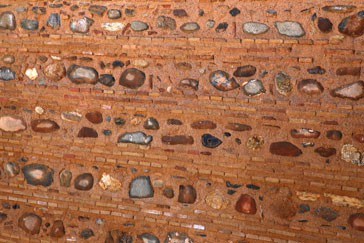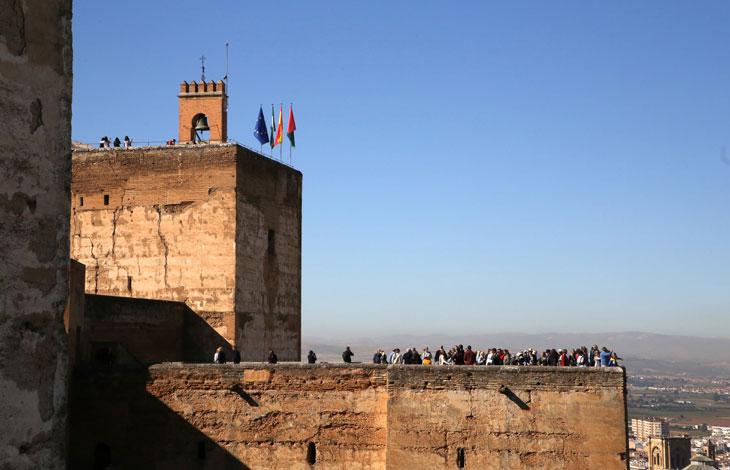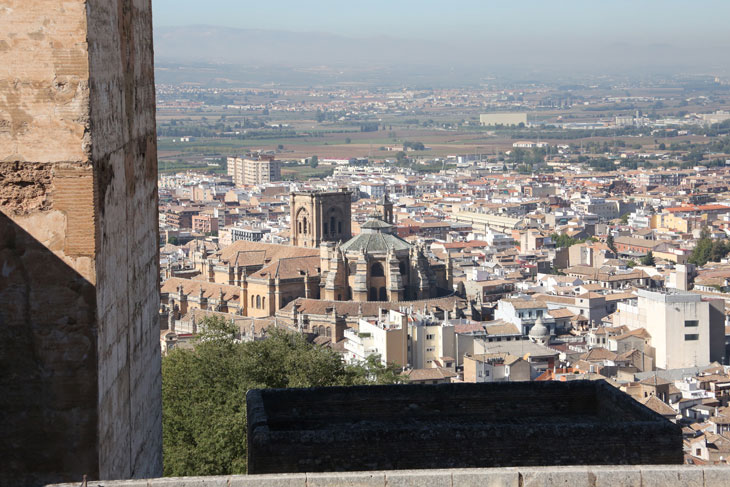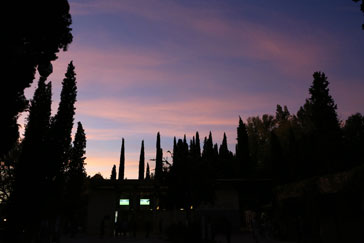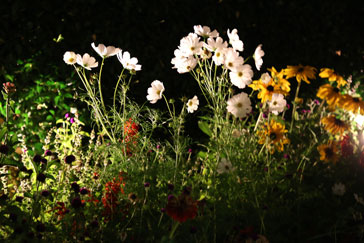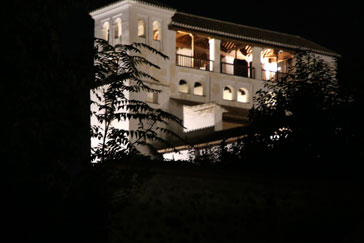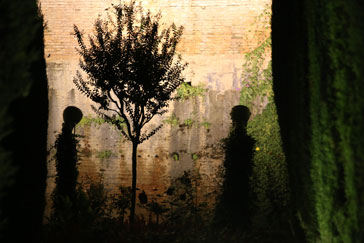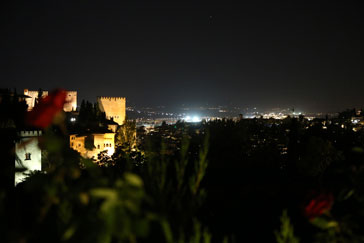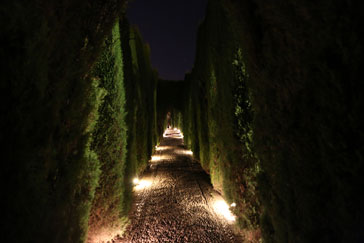Childhood Dreams
The Alhambra
The biggest tourist attraction in Granada is the Alhambra - a palace and fortress complex that dates back to the 9th
century. We knew that tickets sell out fast because the number of visitors per day is limited so we bought ours
on-line as soon as they went on sale in June for our visit in October. Buying the tickets is a confusing process. Some
sections of the Alhambra are free, but others like the Alcazaba, the Nasrid Palaces, and the Generalife and Gardens
require a ticket which costs about 14 euros. Also, when you buy your ticket, you must select a time to visit the Nasrid
Palaces, and you can only enter them at the time printed on your ticket. You can enter the other areas that require a
ticket anytime during the day, but you can only enter them once.
The tickets I purchased granted us admission to the Nasrid Palaces when they opened at 8:30 AM because I wanted to beat
the worst of the crowds, but when we woke up to 46 degree temperatures on the day of our visit, I wondered whether that
had been a good idea. We decided to walk to the plaza near our hotel and summon an Uber, but there were a lot of taxis
waiting for customers in the plaza so we decided to take one of those. We asked the driver to take us to Puerta de la
Justicia, the gate closest to the Nasrid Palaces, but he took us instead to the main entrance gate at the other end of
the large complex. We sprinted through the dark streets, fearful that we would arrive too late to enter the palaces, but
in the end we arrived in plenty of time, and as I had hoped we had them pretty much to ourselves for an hour before the
tourist hordes piled in.
Alhambra can be translated as "the red". It seemed a particularly appropriate name in the pre-dawn light.
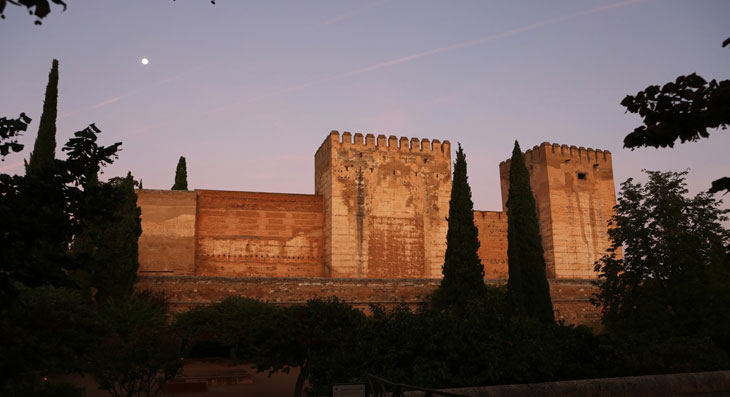
The Nasrid dynasty was the last Muslim dynasty in the Iberian Peninsula, and the palaces served as their base from 1230 until
1492 when the Catholic monarchs Isabella of Castile and Ferdinand of Aragon defeated them after 10 years of battles. In the
years after the war, Jews and Muslims were forced to convert to Christianity bringing an end to the peaceful coexistence of the
three religions that had previously prevailed in the area.
This is the current entrance to the palaces.
Many cats roam the Alhambra. Although we had only been inside for about 5 minutes, this was the second one we saw.
It was the goal of the architects to cover every space, no matter how small, with decoration. Since Muslim art bans the
representation of figures, classical calligraphic decoration is often used. In other words, you are surrounded by poetry.
This is called the Court of the Myrtles because of the myrtle bushes surrounding the central pond. Legend has it that
Christopher Columbus convinced Isabella and Ferdinand to give their approval for his expeditions to the west in the
Comares Tower shown in this picture.
The ceilings are magnificent.
This lovely little corner is called Daraxa's Mirador. A mirador is an architectural feature that looks out on a view, and
in this case, the view is Daraxa's Garden.
I think this picture is taken looking out from the iron gate in the picture above.
There are so many beautiful patterns everywhere you look.
There are also some lovely views of the city from the Alhambra.
The main courtyard of the palace is the Court of the Lions, and its main feature is a large fountain. A poem describing the
beauty of the couryard is carved around the rim of the basin which is supported by 12 lions.
This is called the Patio of the Wrought Iron Grille because there is an iron grille resembling a balcony on one of the
walls.
Eventually we wandered out into a large garden where we found several more cats.
We also found what I think is the most beautiful site of the day - the Ladies Tower. It was built between 1302
and 1309.
It was well past time to find some coffee and some breakfast, but there is a serious absence of restaurants in
the Alhambra and the immediate area. Perhaps this is done intentionally to cut down on the amount of time people
spend viewing the monument.
Eventually we ended up walking partway down the hill to a very fancy hotel where we spent way too much for a
breakfast buffet, but we really needed to sit down for awhile and to drink lots of coffee.
After enjoying our much needed break, we climbed back up the hill to the Puerta de la Justicia - the gate we had
hoped our taxi driver would take us to in the morning.
The oldest part of the Alhambra is the fortress known as the Alcazaba. Built by the founder of the Nasrid dynasty,
Sultan Alhamar, it was the last Moorish stronghold against the Christian crusaders.
The Plaza de las Armas was the official entrance to the Alcazaba. Various services such as a rainwater cistern
and a bath were located here, and the foundations of several houses have also been identified.
In the upper left corner of this picture, you can see the Torre de la Vela, named for the bell called La Vela (The
Sentinel). The Catholic Monarchs brought the bell with them from Castile, and it rang to announce their victory over
the Moors. It still rings on special occasions.
This is the view from the platform where the large crowd of people is standing in the picture above.
There was still a lot of ground to cover, most notably the "garden of the architect" known as The Generalife, but we
were pretty much exhausted by this point. Since we had separate tickets for an evening visit to the gardens, we decided
to give up for the day.
Unfortunately, the evening visit to the gardens was disappointing. In an attempt, perhaps, to spread out the crowd, the
line to be admitted moved very slowly, and when we finally got inside, we discovered that the lighting was uninspiring
and that wandering around on the dark paths was disorienting.
Overall, visiting the Alhambra was one of the highlights of the trip. There is so much to see, it would be best to visit
more than once.

